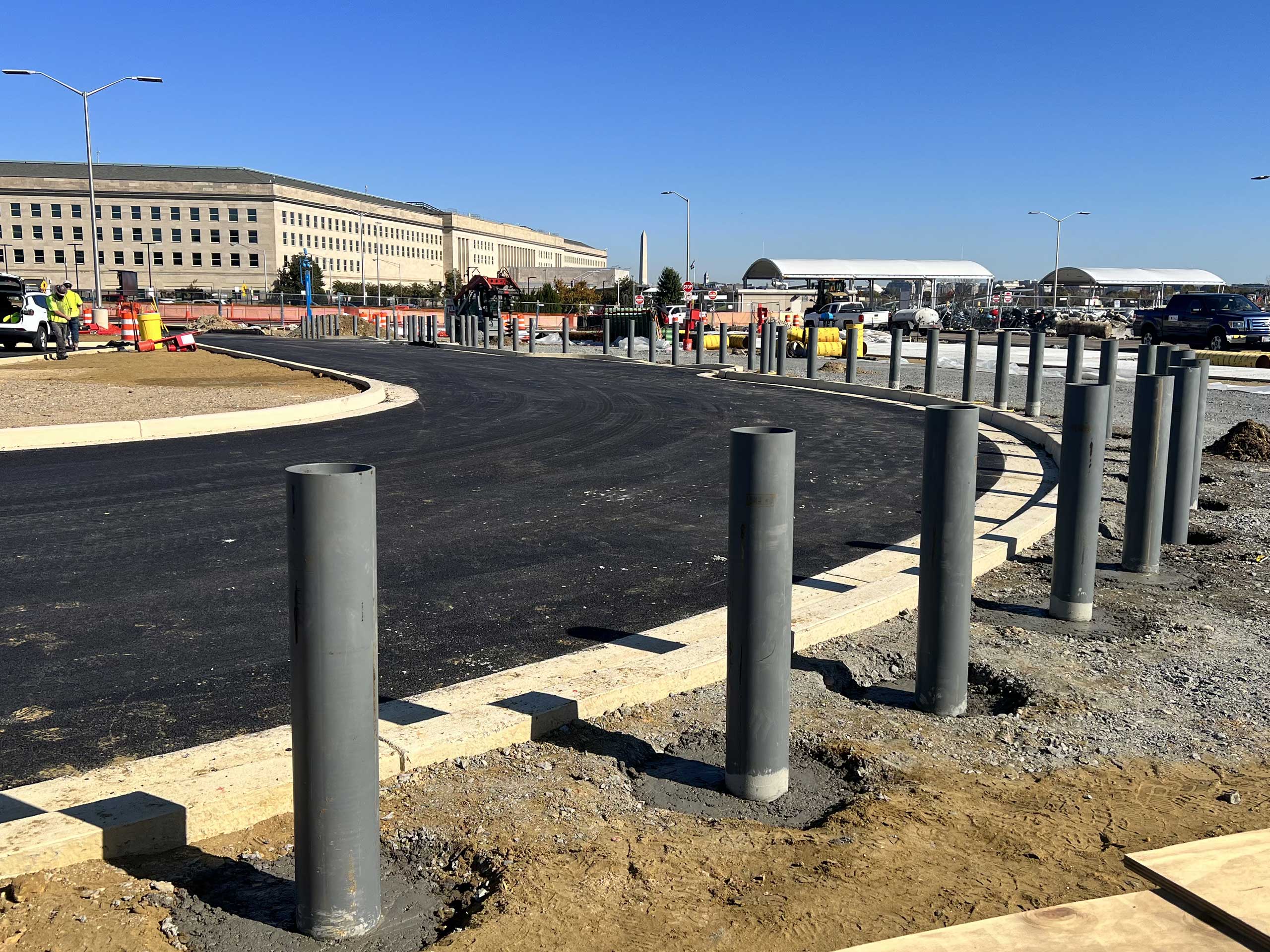How Active Vehicle Barriers Work: A Breakdown of Mechanisms and Triggers
Understanding the mechanics behind active vehicle barriers is essential for any facility seeking to enhance its perimeter security. These systems do more than just stop a vehicle, they respond to threats in real time, integrate with modern surveillance tech, and operate under conditions where milliseconds count. Whether you’re protecting a military checkpoint, data center, or commercial site, knowing how a vehicle barrier system functions can help you make better, safer, and more compliant decisions.
Below, we break down five core aspects of active vehicle barriers, each presented with distinct and diverse considerations involved, from engineering to deployment to real-world application.
Core Components of a Vehicle Barrier System
At the heart of every active vehicle barrier is a combination of structural strength and responsive engineering. These barriers are built to resist high-speed vehicle impact, which means they must combine heavy-duty materials like reinforced steel with fast-acting mechanical or hydraulic systems. The most common types include wedge barriers, retractable bollards, and drop arms, all of which have different profiles but share similar internal components.
The structural element, the barrier itself, is anchored into a reinforced foundation. This allows the system to absorb and redistribute kinetic energy when a vehicle attempts a forced entry. For a vehicle barrier to be crash rated (e.g., ASTM M30 or M50), its frame must survive and stop a 15,000-lb truck moving at high velocity. That makes precision in design and material selection absolutely critical.
Actuation mechanisms are what raise and lower the barrier in response to system triggers. Depending on the application, these may be hydraulic, pneumatic, or electric. Hydraulic systems tend to be the fastest and most durable, making them ideal for high-security sites, while electric or pneumatic options offer lower maintenance for medium-security locations.
Sensors and control electronics are also embedded in the system. These include loop detectors, laser tripwires, RFID readers, and surveillance-integrated triggers. Together, these enable the vehicle barrier system to detect incoming threats, assess authorization, and respond accordingly, within seconds.
Each of these components must work seamlessly to ensure that the barrier functions not only on demand but also under duress. Whether operated manually or via an integrated access control system, the reliability of these elements is the difference between deterrence and vulnerability.
Trigger Mechanisms: How Active Barriers Know When to Deploy
Active vehicle barriers don’t simply raise or lower at random, they are triggered by specific events, access protocols, or security threats. Below are the most common triggers that activate a vehicle barrier system:
- Access Control Authorization: Most vehicle barrier systems are integrated with RFID scanners, badge readers, or biometric checkpoints. When an authorized credential is detected, the barrier opens accordingly.
- License Plate Recognition (LPR): Cameras scan license plates and verify them against a database. If the license plate is pre-approved, the active vehicle barrier will automatically deploy or remain lowered for access.
- Loop Detectors and Motion Sensors: Installed in the ground before the access point, loop detectors sense when a vehicle approaches. If the system is armed and the vehicle is unauthorized, the barrier raises automatically.
- Remote Manual Activation: Security personnel can control the vehicle barrier manually from a central control room. This trigger is often used in combination with CCTV surveillance or visual confirmation protocols.
- Alarm-Based Triggers: If an alarm is triggered elsewhere on the premises (e.g., intruder alert, breach detection), the vehicle barrier system can be programmed to deploy preemptively as part of a broader lockdown protocol.
- Emergency Override Systems: In critical conditions like power failure or cyberattack, fail-safe triggers allow for manual deployment or retraction using backup systems like a hand pump or battery circuit.
By understanding how these triggers operate, you can design an active vehicle barrier system that is responsive, accurate, and tightly integrated with your overall security strategy.
Comparing Deployment Mechanisms by Barrier Type
When evaluating active vehicle barriers, it’s essential to understand how each type functions in real-world conditions. From speed of deployment to crash resistance and ideal environments, each barrier system offers distinct advantages. Below is a comparative breakdown of four key vehicle barrier types, highlighting what sets each apart in performance and purpose.
- Wedge Barrier: The Gold Standard for High-Security Zones
Wedge barriers are among the most formidable options in any vehicle barrier system. Designed for maximum stopping power, they deploy rapidly, often in just 1 to 3 seconds, using hydraulic or electric actuation. Their low-profile design allows them to sit flush with the road surface when retracted, yet rise to full height instantly in the event of a threat.These active vehicle barriers are most commonly used in embassies, military bases, and critical government installations, where the need for fast, decisive vehicle interdiction is non-negotiable. Most wedge barriers are crash rated to ASTM M30–M50 standards, enabling them to stop a 15,000-lb truck traveling at 50 mph. For sites with limited time for response and zero tolerance for impact, wedge barriers are the benchmark.
- Retractable Bollards: Discreet Strength for Urban and Mixed-Use Areas
Retractable bollards serve a dual role, providing serious vehicular stopping power while preserving pedestrian-friendly aesthetics. These active vehicle barriers typically deploy in 3 to 5 seconds, using hydraulic, pneumatic, or electric systems depending on the location’s demands and maintenance profile.Their strength lies in their flexibility. Retractable bollards are often found in urban settings, financial districts, public plazas, and mixed-use developments, where space and visual continuity matter. Despite their compact size, they are fully capable of meeting ASTM M30–M50 crash standards, making them ideal for high-traffic zones that require security without sacrificing flow or aesthetics.
- Drop Arm Barrier: Reliable Coverage for Industrial and Institutional Sites
Drop arm barriers are a more visible form of active vehicle barrier system, recognizable by their horizontal arms that raise to allow passage and lower to block entry. These barriers deploy in 2 to 4 seconds, powered by electric or pneumatic motors, and can be integrated into broader perimeter security systems.This type of vehicle barrier is particularly well-suited to industrial facilities, ports, correctional institutions, and similar operational sites where wide-lane access and moderate traffic flow are the norm. Most drop arm barriers are rated up to ASTM M30–M40 or DOS K4–K8, providing substantial crash resistance at lower cost and with fewer spatial constraints than wedge barriers.
- Swing Gates (Active): Controlled Access for Low-Volume Entry Points
Active swing gates offer a more traditional gate-like appearance but with automation features for controlled deployment. These vehicle barriers typically take 5 to 10 seconds to open or close and are usually electrically operated with a manual override option for emergency situations.Best for low-volume access points, residential estates, or service entrances, swing gates offer modest security with a familiar design. While not always crash-rated, some models meet M-rating standards, making them viable for sites that require access control over impact resistance. They’re best suited where aesthetic or functional continuity is prioritized over rapid, heavy-duty response.
Each active vehicle barrier type fits a specific security profile. From the fast-reacting wedge barrier to the aesthetically conscious retractable bollard, and from the reliable drop arm to the controlled swing gate, selecting the right deployment mechanism requires careful alignment with the site’s operational tempo, security level, and space availability. A well-matched vehicle barrier system doesn’t just stop threats, it ensures safety and harmony.
How Active Barriers Respond in the Field
Imagine a logistics hub that receives 500 deliveries a day. The facility has two access points: one for authorized personnel and another for delivery vehicles. An active vehicle barrier system, equipped with retractable bollards and RFID entry, handles routine traffic smoothly. At 11:30 a.m., however, an unidentified truck races toward the main gate without slowing.
Within seconds, the loop detectors and motion sensors pick up abnormal speed and trajectory. Simultaneously, the LPR camera fails to recognize the plate, triggering an alarm. The vehicle barrier activates, hydraulic bollards shoot up from the ground in under three seconds. The impact of the truck is absorbed by the bollards, which remain intact due to ASTM M50-level construction.
Another case takes place at a federal building where drop arm barriers are used at outer perimeter lanes. During a planned protest, a vehicle attempts to enter through a restricted staff gate. The remote surveillance team spots the intrusion and triggers a manual lockdown from the control room. The drop arm barriers deploy horizontally, closing off the entrance before the vehicle reaches the checkpoint.
These scenarios underscore the importance of rapid-response vehicle barrier systems. Whether autonomously triggered or manually deployed, active vehicle barriers are critical in preserving life, infrastructure, and operational continuity during real-world threats.
Maintenance and Monitoring: Keeping Your Vehicle Barrier System Operational
Even the strongest active vehicle barriers can fail if not properly maintained. Below are essential maintenance and monitoring tasks that should be performed regularly to ensure long-term functionality:
- Daily Visual Inspections: Look for fluid leaks, structural damage, or obstructed sensors. Surface-level checks help detect minor issues before they escalate.
- Monthly Function Tests: Operate the system through a full cycle under both automatic and manual conditions. Verify speed, smoothness, and responsiveness.
- Quarterly System Diagnostics: Use internal monitoring tools to assess actuator health, sensor alignment, and control panel logs. This ensures all electronic triggers are working properly.
- Hydraulic Fluid Checks: For hydraulic-powered barriers, monitor fluid levels and replace as needed. Leaks or low pressure can delay or prevent barrier deployment.
- Emergency Backup Test: Simulate power outages and verify that battery or manual override systems are functional. A fail-safe feature that doesn’t work when needed is worse than no system at all.
- Firmware and Integration Updates: Vehicle barrier systems often rely on access control software and firmware. Schedule updates and patch management for cybersecurity resilience.
Regular maintenance is as important as the installation itself. A neglected system becomes unreliable, while a well-monitored vehicle barrier offers peace of mind and proven protection when it counts.
Raise the Standard with Black Security Products Barrier Systems
Understanding how active vehicle barriers work is crucial, but choosing a system backed by real-world performance is what sets leaders apart. At Black Security Products (BSP), we don’t just meet industry standards, we engineer vehicle barrier systems that perform reliably under pressure, day after day.
Whether you require wedge barriers for high-threat checkpoints, retractable bollards for urban security, or drop arms for industrial sites, BSP offers a full suite of crash-rated solutions. Every barrier is designed to integrate with your broader access control architecture and built to endure the harshest environmental and operational demands.
Looking to enhance perimeter security with technology you can trust? Contact us at BSP for expert recommendations, site-specific engineering, and dependable performance that keeps your access points protected, no matter the threat.


